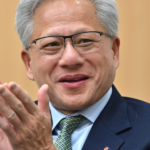For the past eight years, Stamford, Connecticut-based furniture company Lovesac has been transforming its supply chain.
“We have the intention to be manufacturing our core products in America by mid-next year, and have the bulk of our production happening in America by the very end of next fiscal year,” Nelson told Fortune. “If that’s truly what Trump wanted, then I guess it worked on us.”
“I mean, I’ll take it,” Nelson said of the potential refunds. “For us, it’s tens of millions of dollars. So that would be neat.”
But the reality of pursuing these refunds—should the Supreme Court even rule against the tariffs—is confounding, complicating whether it’s even worth the effort of recouping the lost cash. For some companies, the effort may be worth it. For others, it may still be worth it—but it will also be a total pain.
“The general feeling is, if you have the resources, and you have the capability, the juice is worth the squeeze,” David Warrick, executive vice president of supply-chain risk management firm Overhaul, told Fortune. “If you are a smaller business or a smaller importer, you’ve already spent time baking in the cost of tariffs and the associated risks to your supply chain, then you’ve got to weigh up that cost-benefit.”
Asking companies to even consider the possibility of refunds is a tall order, given the lack of information on what the refund process would look like, even with the Supreme Court hearing the case on tariffs in a matter of weeks.
“We’re not even sure how [CBP] will actually be able to manage these tariffs,” Warrick said.
Henrybuilt, a luxury home manufacture with a mostly domestic supply chain, is one of the companies brushing off the idea of refunds, even as it continues sourcing materials from tariff-struck Austria.
“That might make total sense if it’s a big number,” CEO Scott Hudson said. “I doubt it would be a big number for us, so it’s probably not worth chasing.”
Above all, Warrick said, timing remains the biggest variable in determining when and how companies can begin the refunding process.
“Nobody knows how long this process will take,” he said. “And no matter what the initial outcome will be, rest assured, it will be appealed on both sides. So I don’t think that we’re going to see a short term outcome on this.”
While the refund process remains a mystery, that hasn’t stopped some refinancing companies from entering the fold, seeing an opportunity to make cash off of companies not wanting to deal with a headache of a refund process, Warrick said. Liquidation specialists are speculating the refunds will happen and buying the rights to them, offering businesses about 20% of total tariffs paid in exchange for the rights to any future refunds.
“Speculators are stepping in, saying, why would you want to deal with all of that yourself?” Warrick said. “And if you’re a small, medium enterprise who’s already gone through the pain of having to pay the tariffs and you don’t want to change your processes, that might sound like a very attractive proposal.”
At this point, having navigated more than six months of whipsaw tariff policies, the question of the tariffs’ legality is irrelevant for some businesses. For Lovesac, the overhaul in its supply chain over the past decade presented growing pains, but the tariffs were really an opportunity to develop American manufacturing, a goal CEO Nelson had from the company’s inception. It essentially doesn’t matter for some firms if the refund process is a black box—or a complete fantasy—because they have made long-term adjustments to their businesses to account for the export taxes, whether they see those changes as a sunk cost or as future-proofing.
“Even if there was a refund, and then the tariffs go away—all the tariffs go away—it won’t change my point of view on what we’re going to do,” Nelson said.
“I would love it,” he concluded. “But I don’t expect it.”









